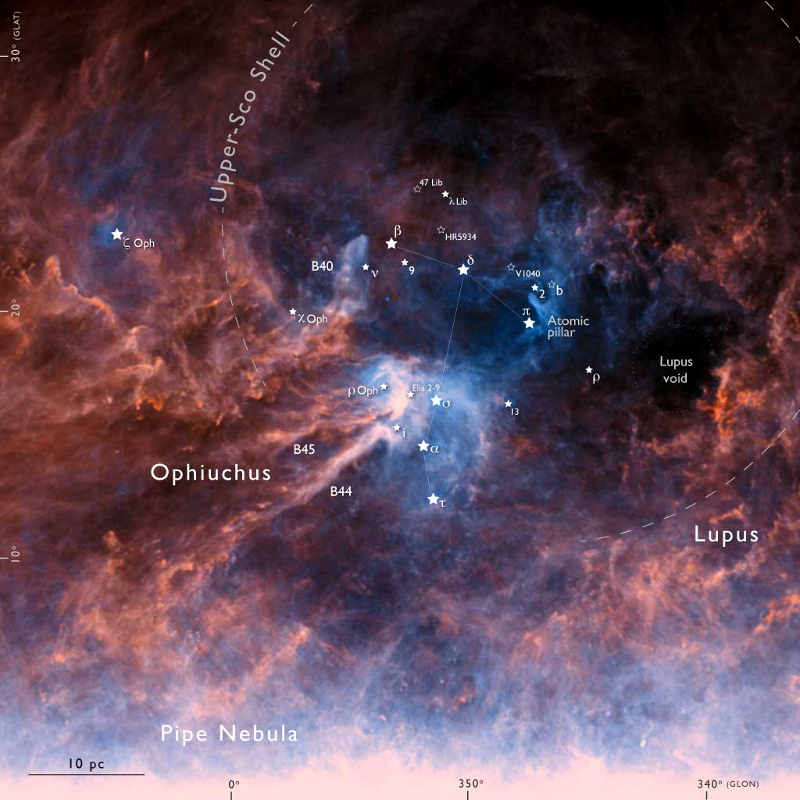| EPoS Contribution |
|
The Ophiuchus complex and the role of feedback
Joao Alves U Vienna, Vienna, AT | |
| The last ten years of ISM and star formation research have brought imense progress driven largely by the availability of sensitive infrared and sub-millimeter telescopes both on the ground and in space. The new facilities have given us much needed resolution and sensitivity, but as important, they have given us the wide-field view, or the context, allowing for important missing connections to be revealed. In this talk we focus on the closest star forming complex to Earth, Ophiuchus, and present optical-depth and temperature maps of the entire complex using Planck, Herschel, and 2MASS/Nicest extinction data. The maps have a column density dynamic range covering three orders of magnitude (from 6 x 1020 cm-2 to 6 x 1023 cm-2), and a spatial dynamic range covering four orders of magnitude (from about 2000 AU to 100 pc). This dynamic range, a dream only ten years ago, allow us to make surprising findings, e.g., all protostars in Ophiuchus (97%) can be readily associated with a particular source of feedback in the region and that the Ophiuchus filaments (up to 20 pc long) are also formed by the feedback from massive stars, in contrast with the currently accepted filament formation scenario of colliding flows orthogonal to the filament axis. We find a wide variety of filament widths and astonishingly beautiful cloud complexity down to the sub-parsec scale. Finally, we do not find N-PDFs to be log-normal, but power-laws, and argue that we as a community have been having an abusive relationship with 1D metrics. And that we should change. | |
 | |
| Caption: Color composite of the Ophiuchus, Pipe Nebula, and Lupus cloud complexes (blue: extrapolated Planck 250 μm, green: Planck 350 μm, red: Planck 500 μm). Star symbols represent the position of massive ionizing stars (B3 or earlier) while symbol size represent relative brightness. Most of these stars have associated Hα extended emission while only the two fainter objects are not associated with WISE extended emission. Most if not all the stars are interacting with the molecular cloud complex and constitute the main source of heating (the bluer regions) and pressure in the complex. | |
| Collaborators: M. Lombardi, IT C. Lada, US H. Bouy, ES A. Hacar, AT S. Meingast, AT J. Forbrich, AT J. Ascenso, PT |
Suggested Session:
Stellar Feedback |

